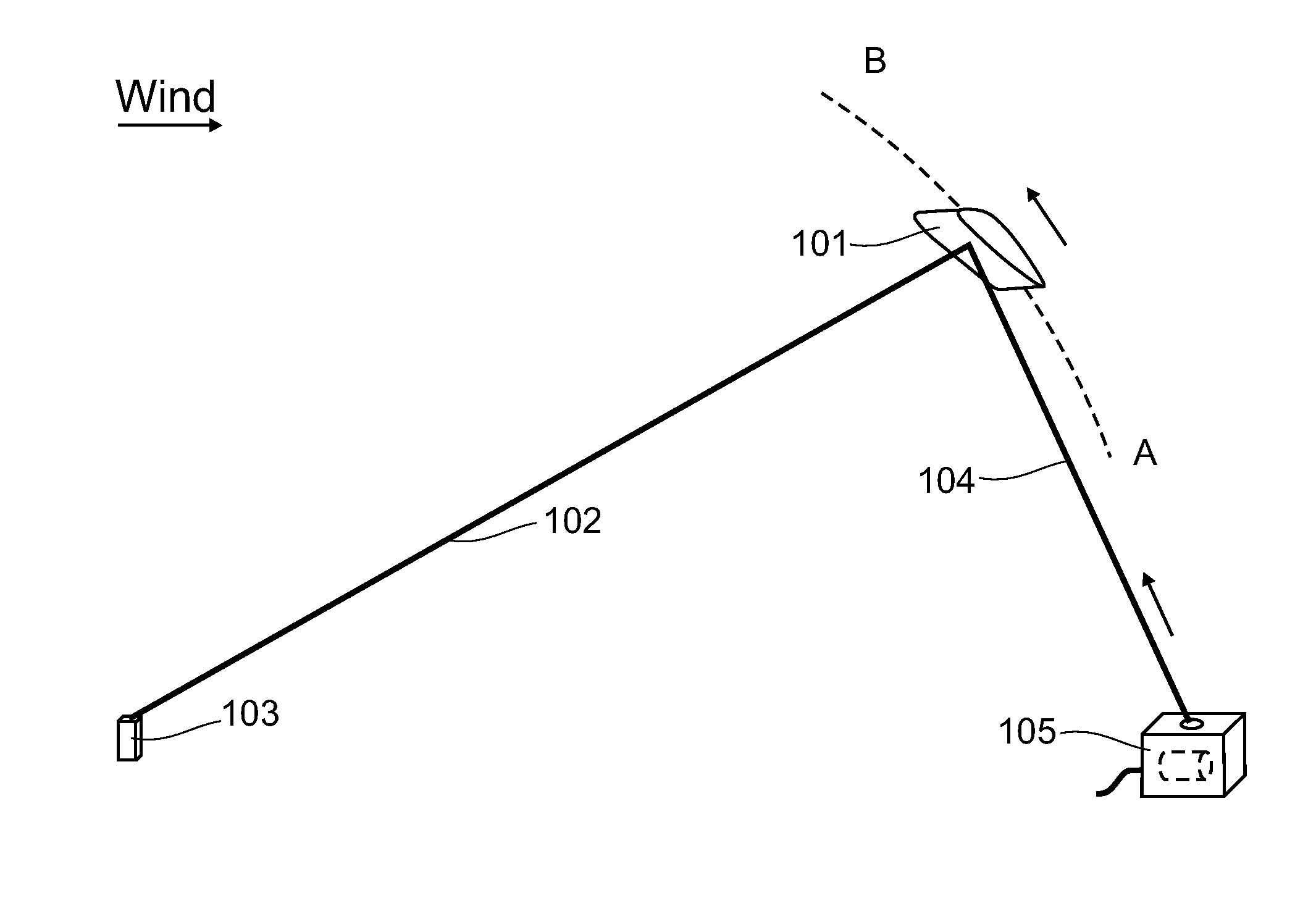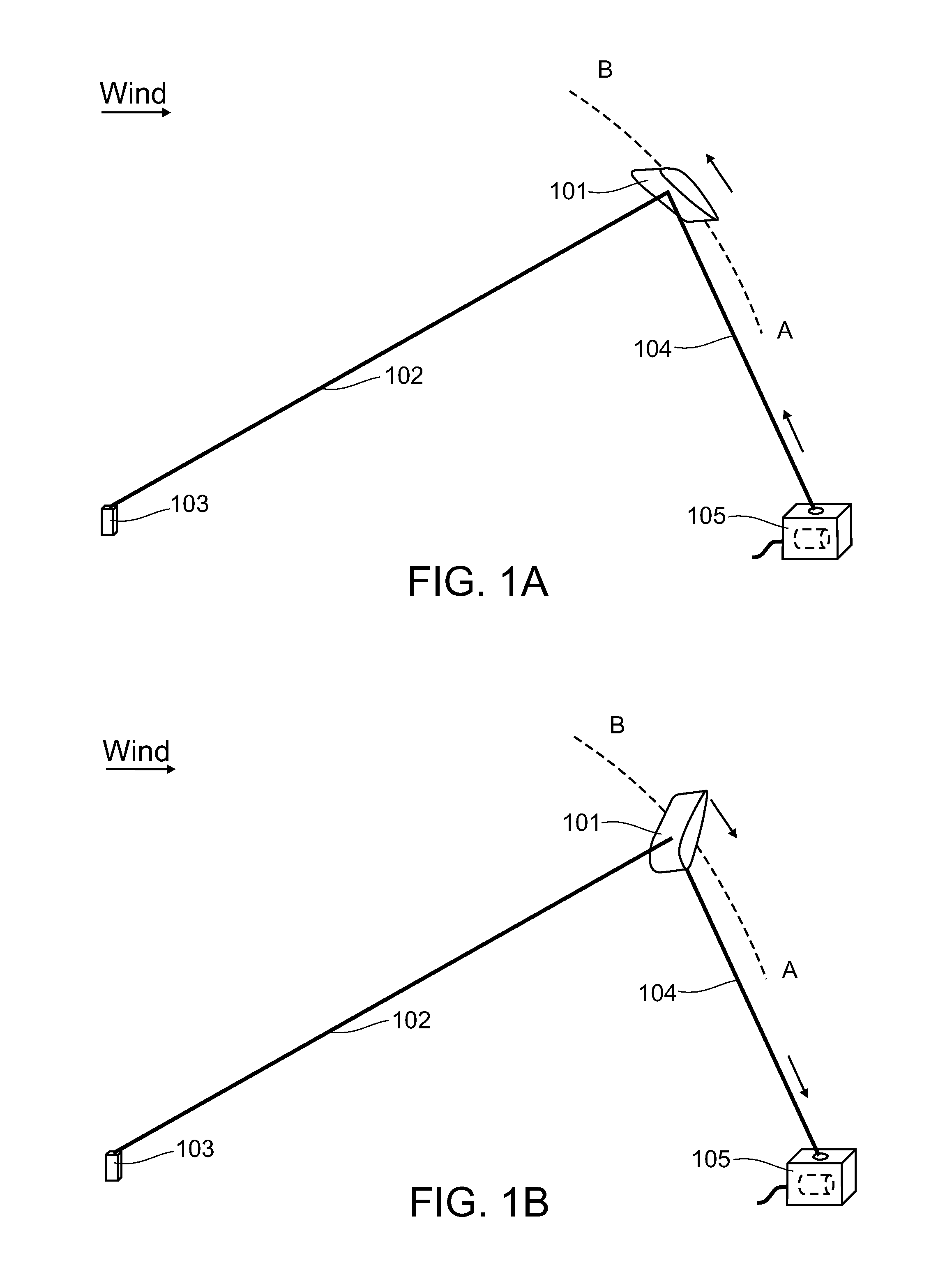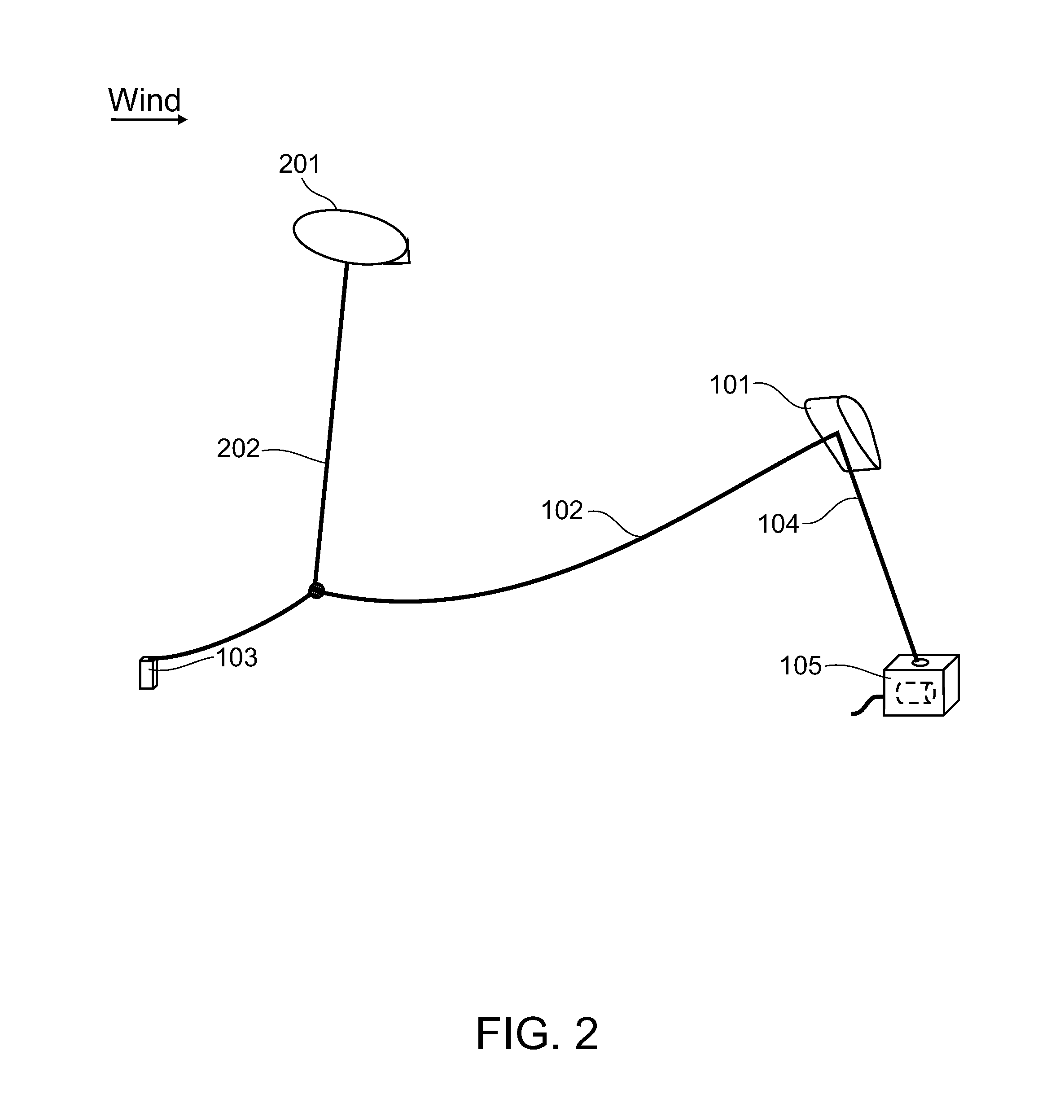Airborne wind energy conversion system with fast motion transfer
a technology of airborne wind and energy conversion, which is applied in the direction of electric generator control, toy aircraft, machines/engines, etc., can solve the problems of high force on the tether, the velocity of the lengthwise motion of the tether must be well below the velocity of the wing, and the tether is subject to very high force, so as to achieve a lower wing area, high lift to drag ratio, and high speed
- Summary
- Abstract
- Description
- Claims
- Application Information
AI Technical Summary
Benefits of technology
Problems solved by technology
Method used
Image
Examples
Embodiment Construction
[0068]As shown in the accompanying illustrations, for exemplary purposes, the present invention is directed to a wind energy conversion device (WECD) and related method involving transferring mechanical power with a flying wing having a cable or belt transmitting power to a rotor of a ground-based electrical generator with high velocity, exceeding the speed of the wind, achieving high aerodynamic efficiency of the wing and a high power for a given torque.
[0069]With reference now to FIG. 1A, a WECD embodying the invention is shown in its working phase. In this embodiment of the invention, a wing 101 is placed in the air and tethered to the ground by a tether (a cable, a guy wire) 102. On the other end, tether 102 is anchored to the ground through a guy wire attachment 103, preferably raising slightly above the ground. Another cable (or a rope or a belt) 104 is attached to wing 101, and descends toward a ground station 105. Cables 102 and 104 are attached to wing 101 in such a way as ...
PUM
 Login to View More
Login to View More Abstract
Description
Claims
Application Information
 Login to View More
Login to View More - R&D
- Intellectual Property
- Life Sciences
- Materials
- Tech Scout
- Unparalleled Data Quality
- Higher Quality Content
- 60% Fewer Hallucinations
Browse by: Latest US Patents, China's latest patents, Technical Efficacy Thesaurus, Application Domain, Technology Topic, Popular Technical Reports.
© 2025 PatSnap. All rights reserved.Legal|Privacy policy|Modern Slavery Act Transparency Statement|Sitemap|About US| Contact US: help@patsnap.com



